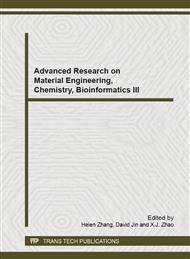p.76
p.81
p.86
p.90
p.93
p.97
p.101
p.111
p.115
Temperature Analysis of Piercing Process Based on Material Properties in Diescher's Mill with Finite Element Method
Abstract:
In this paper, the simulation of the piercing process is performed by the three-dimensional finite-element method in Dieschers mill. The material properties of steel 33Mn2V are introduced. The simulated results visualize dynamic evolution of temperature, especially inside the workpiece. Its show the distribution of temperature on the internal and external surface of the work-piece is non-uniform. The temperature of the internal surface is far higher than that of the external surface of workpiece.
Info:
Periodical:
Pages:
93-96
Citation:
Online since:
October 2013
Authors:
Keywords:
Price:
Сopyright:
© 2014 Trans Tech Publications Ltd. All Rights Reserved
Share:
Citation:


